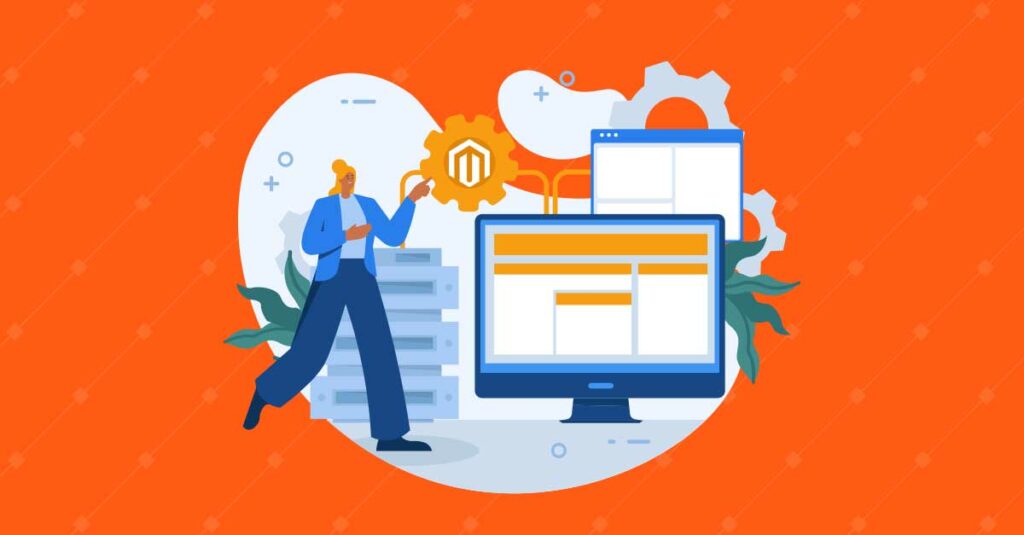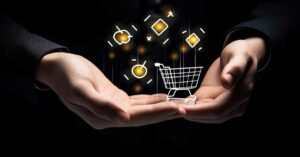Transactions and Beyond – Using Headless Strategies to Elevate End-to-End Customer Experience
As the digital economy continues to march ahead, businesses are increasingly focusing on breaking down their digital assets to a granular level to ensure better attention for every component that contributes to their digital presence. One of the forerunners in this approach is undoubtedly headless tech architecture. Businesses are embracing Headless End-to-End customer experience strategies to deliver seamless customer experiences across various channels and touchpoints .
What is headless e commerce?
In simple terms, headless refers to the principle of building enterprise applications by separating the customer-facing front-end and business logic-integrated back-end. Both these entities are provided with an independent existence, have the freedom to be built with any technology stack, and communicate with each other via APIs.
Leveraging headless strategies for core business systems is fast becoming a major trend in the digital space. Studies show that nearly 77% of enterprises that adopted a headless approach to their eCommerce business experienced better agility, speed, and ease of making changes to their storefront.
From CRM to eCommerce, more customer-facing channels are being increasingly transitioned into a headless architecture not just for its increased agility but also to enhance the end-to-end customer journey.
With competition tightening, a winning customer experience can be the critical factor that allows a business to grow sustainably. Let us examine 4 ways in which headless strategies can play a pivotal role in elevating the customer experience for businesses.
1. Enable Hyper-Personalization
With the decoupling of back-end and front-end experiences, enterprises can experiment with new and innovative personalization initiatives in the front-end interface without disrupting the core business logic stacked safely away in the back-end for an exceptional headless commerce user experience.
In the past, this was not easy as any changes or new technology added to the front-end would have to work seamlessly with the back-end as well. The resulting integrations and modifications needed for interoperability posed significant challenges for enterprises.
One of the Headless commerce benefits is that in this approach, developers are given the freedom to build any feature in the front-end or add new logic in the back-end to enable better data-driven personalization. This is critical in today’s hyper-personalization era, where most companies rely on AI and machine learning tools to learn and deliver personalized experiences that each customer would love.
2. Secure and Democratize Data Availability
By building the right APIs, enterprises can maximize the use of their underlying data to run as many innovative digital services for customers. In a headless approach, enterprise data can be aggregated and isolated in the back-end and supplied on-demand to front-end services. This allows enterprises to add additional layers of security in the isolated data management layer in the back-end.
Appropriate access controls, encrypted API information exchange networks, and authentication measures together allow data to be securely managed and made available to customer experience points on demand.
One of the security benefits of headless commerce architecture is the reduction of attack surface in the event of a security lapse. Since the front-end and back-end are decoupled, it is impossible for threat agents to make their way into the deeper business operational systems or work logic which resides securely in the back-end.
3. Improve Scalability
As digital businesses expand, enterprises often find it hard to dynamically scale their digital infrastructure to keep up with the market’s needs. For example, a shopping website may experience heavy traffic during the holiday season.
Traditionally, the answer to this challenge has been to scale up the infrastructure by expanding computing power, adding new tools or features to manage rapid growth, and much more. But the issue here is that any change introduced to support scaling needs to work seamlessly with both the front-end and back-end systems.
With headless architecture, enterprises can scale up the desired capabilities of their front-end or back-end digital assets independently, based on the need. This lowers the cost of scaling, facilitates more dedicated attention towards critical experience areas, and drives faster response to market trends.
4. Easy Upgrades and Maintenance
From the above points, it is clear that a headless architecture supports rapid feature additions and changes in enterprise applications. From a customer experience perspective, there is always a demand for frequent changes in their interactions with digital channels. It could be from the point of view of the devices they use to access such channels, the language or content-related preferences they have, the speed of page loads, etc.
To accommodate such a high degree of dynamic customer responses, there is a need for constant upgrades to the application both at a functional level as well as the front-end zones. In Headless end-to-end customer experience, this is easily achieved. From choices in front-end CMS customization to multiple commerce engine options in the back-end, enterprises can upgrade their customer experience in alignment with market trends and easily maintain their digital assets.
Faq’s
End-to-end customer experience refers to the entirety of interactions and touchpoints a customer encounters throughout their journey with a brand, from the initial awareness to post-purchase support. It encompasses every aspect of the customer’s interaction with the brand, including marketing, sales, customer service, product quality, and post-sales support.
Headless commerce separates the front-end presentation layer of an e-commerce platform from its back-end functionality. This allows businesses to flexibly customize digital experiences for customers for personalized, omnichannel experiences tailored to individual preferences. Ultimately, this enhances the overall customer experience, providing a dynamic and user-friendly shopping journey across various channels.
Headless commerce enhances the customer experience by providing faster, personalized, and consistent interactions across channels. It enables seamless navigation, personalized recommendations, and integration with emerging technologies, ultimately offering customers a more enjoyable and future-proofed shopping experience.
Conclusion
Headless commerce advantages are immense. Having a headless strategy is certainly an ideal option for headless commerce companies to win in the digital economy. However, selecting the right tools, planning for prioritized implementation of the headless roadmap, and measuring the success of its metrics require deeper knowledge and expertise in the technology. This is where Ignitiv can be your key partner. Get in touch with us to know more about our Headless integration services.








